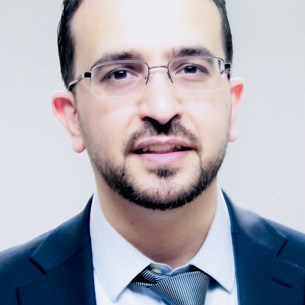Meeting
2022 ASCO Annual Meeting

Department of Hematology-Oncology, University of Alabama at Birmingham/O'Neal Comprehensive Cancer Center, Birmingham, AL
Moh'd M. Khushman , Michael Driscoll Toboni , Jia Zeng , Joanne Xiu , Upender Manne , Alex Farrell , Bassel F. El-Rayes , Emil Lou , Anthony Frank Shields , Philip Agop Philip , Mohamed E. Salem , Jim Abraham , David Spetzler , John Marshall , Priya Jayachandran , Michael J. Hall , Heinz-Josef Lenz , Wolfgang Michael Korn , Matthew A. Powell
Background: In colorectal cancer (CRC) and endometrial cancer (EC) patients (pts), preliminary data suggest a differential response to immune checkpoint inhibitors (ICIs) according to different MMR alterations. The drivers of this difference remain unknown and no reliable predictive biomarker has been found. We explored the genomic alterations, tumor mutation burden (TMB), immune-related gene expressions and signatures, tumor microenvironment (TME), neoantigen load and median overall survival (mOS) inCRC and EC pts treated with ICIs with different MMR alterations. Methods: 13,701 CRC and 3,315 EC specimens were tested at Caris Life Sciences (Phoenix, AZ) with Next Gen Sequencing (NGS) of DNA (592-gene or whole exome) and RNA (whole transcriptome). MMR/MSI status was determined by IHC of MMR protein and/or NGS. Immune cell abundance was quantified using quanTIseq. Gene expression profiles were analyzed for T cell-inflamed signature (TIS) and IFN-gamma scores. Immune epitope prediction was performed using the NetMHCpan v4.0 method in the Immune Epitope Database. Real-world mOS was obtained from insurance claims data and calculated from tissue collection or ICIs start to last contact. Statistical significance was determined using chi-square/Fisher-Exact and adjusted for multiple comparisons (adjusted p < 0.05). Results: In CRC, 84 (0.6%) pts had intact expression of MLH1 and PMS2 and co-loss of MSH2 and MSH6 (MutS) and 648 (4.7%) had co-loss of MLH1 and PMS2 and intact MSH2 and MSH6 (MutL). 117 (0.9%) had other MMR IHC loss. APC, KRAS, ERBB2, ERBB3 and MSH2 mutations rates were higher in MutS while BRAF mutation rate was higher in MutL. B cell, NK cell content and neoantigen load (high affinity epitopes: p < 0.05, intermediate: p < 0.01, low: p < 0.001) were higher in MutS. The mOS in MutS (N = 149) vs. MutL (N = 980) was 56 months (m) vs. 36 m (p = 0.003). In ICI-treated pts, the mOS in MutS (N = 28) vs. MutL (N = 149) was not reached (NR) vs. 32 m (p = 0.005). BRAF mutation didn’t impact survival in MutL. In EC, 48 (1.4%) pts had MutS and 915 (27.6%) had MutL. 81 (2.4%) had other MMR IHC loss. IHC-PD-L1, TMB, neoantigen load (high affinity epitopes: p < 0.01, intermediate: p < 0.0001, low: p < 0.0001), TIS, IFN-gamma scores, immune related gene expressions, TME (Macrophage M1, CD8+) were higher in MutS. The mOS in MutS (N = 94) vs. MutL (N = 1804) was NR vs. 47 m (p < 0.001). In ICI-treated pts, the mOS in MutS (N = 11) vs. MutL (N = 273) was NR vs. NR (p = 0.559). Conclusions: This is the largest study to explore differential response to ICIs in CRC and EC pts with different MMR alterations. In pts with CRC and EC, the mOS was longer in MutS compared to MutL. In ICI-treated pts, the mOS was longer in MutS compared to MutL in CRC but not in EC. Among the explored biomarkers, neoantigen load was higher in MutS compared to MutL in both CRC and EC and maybe the driving factor for differential response to ICIs.
Disclaimer
This material on this page is ©2024 American Society of Clinical Oncology, all rights reserved. Licensing available upon request. For more information, please contact licensing@asco.org
2022 ASCO Annual Meeting
Poster Session
Gastrointestinal Cancer—Colorectal and Anal
Gastrointestinal Cancer—Colorectal and Anal
Other Colorectal and Anal Cancer
J Clin Oncol 40, 2022 (suppl 16; abstr 3625)
10.1200/JCO.2022.40.16_suppl.3625
3625
418
Abstract Disclosures
2023 ASCO Annual Meeting
First Author: Megan Philippa Hitchins
2023 ASCO Annual Meeting
First Author: Marija Staninova Stojovska
2018 ASCO Annual Meeting
First Author: Mohamed E. Salem
2023 ASCO Annual Meeting
First Author: Amit Mahipal